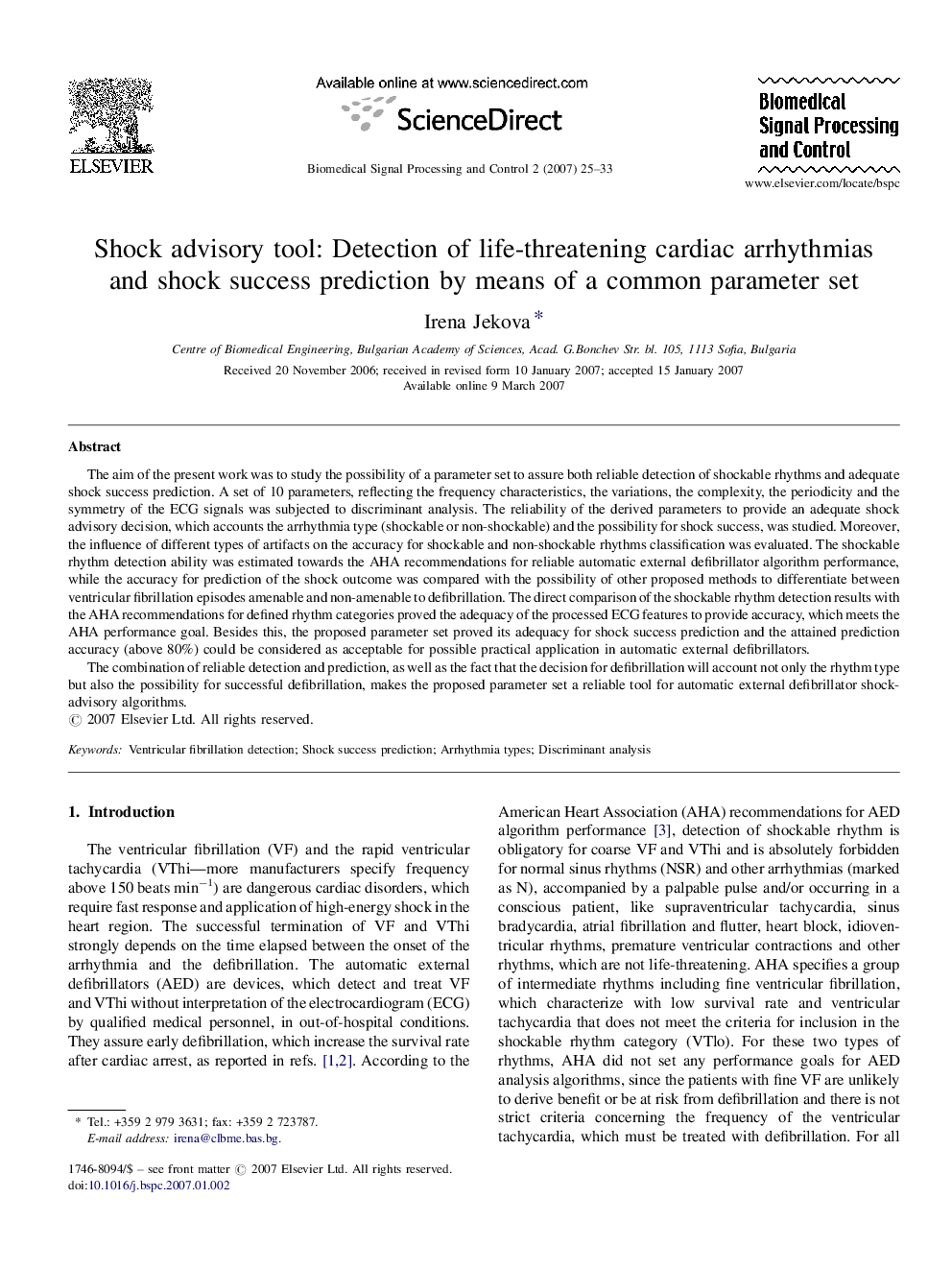| Article ID | Journal | Published Year | Pages | File Type |
|---|---|---|---|---|
| 562805 | Biomedical Signal Processing and Control | 2007 | 9 Pages |
The aim of the present work was to study the possibility of a parameter set to assure both reliable detection of shockable rhythms and adequate shock success prediction. A set of 10 parameters, reflecting the frequency characteristics, the variations, the complexity, the periodicity and the symmetry of the ECG signals was subjected to discriminant analysis. The reliability of the derived parameters to provide an adequate shock advisory decision, which accounts the arrhythmia type (shockable or non-shockable) and the possibility for shock success, was studied. Moreover, the influence of different types of artifacts on the accuracy for shockable and non-shockable rhythms classification was evaluated. The shockable rhythm detection ability was estimated towards the AHA recommendations for reliable automatic external defibrillator algorithm performance, while the accuracy for prediction of the shock outcome was compared with the possibility of other proposed methods to differentiate between ventricular fibrillation episodes amenable and non-amenable to defibrillation. The direct comparison of the shockable rhythm detection results with the AHA recommendations for defined rhythm categories proved the adequacy of the processed ECG features to provide accuracy, which meets the AHA performance goal. Besides this, the proposed parameter set proved its adequacy for shock success prediction and the attained prediction accuracy (above 80%) could be considered as acceptable for possible practical application in automatic external defibrillators.The combination of reliable detection and prediction, as well as the fact that the decision for defibrillation will account not only the rhythm type but also the possibility for successful defibrillation, makes the proposed parameter set a reliable tool for automatic external defibrillator shock-advisory algorithms.
